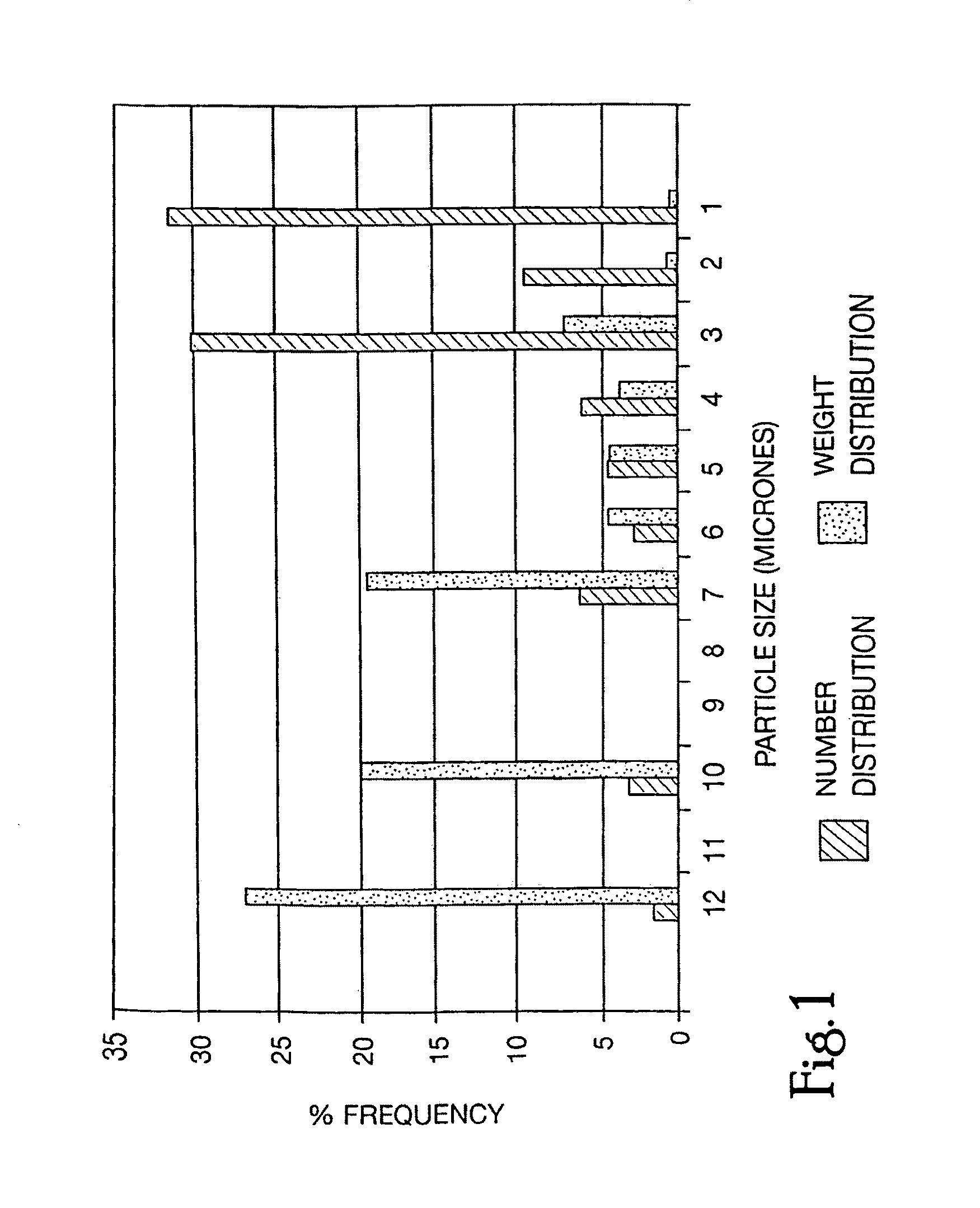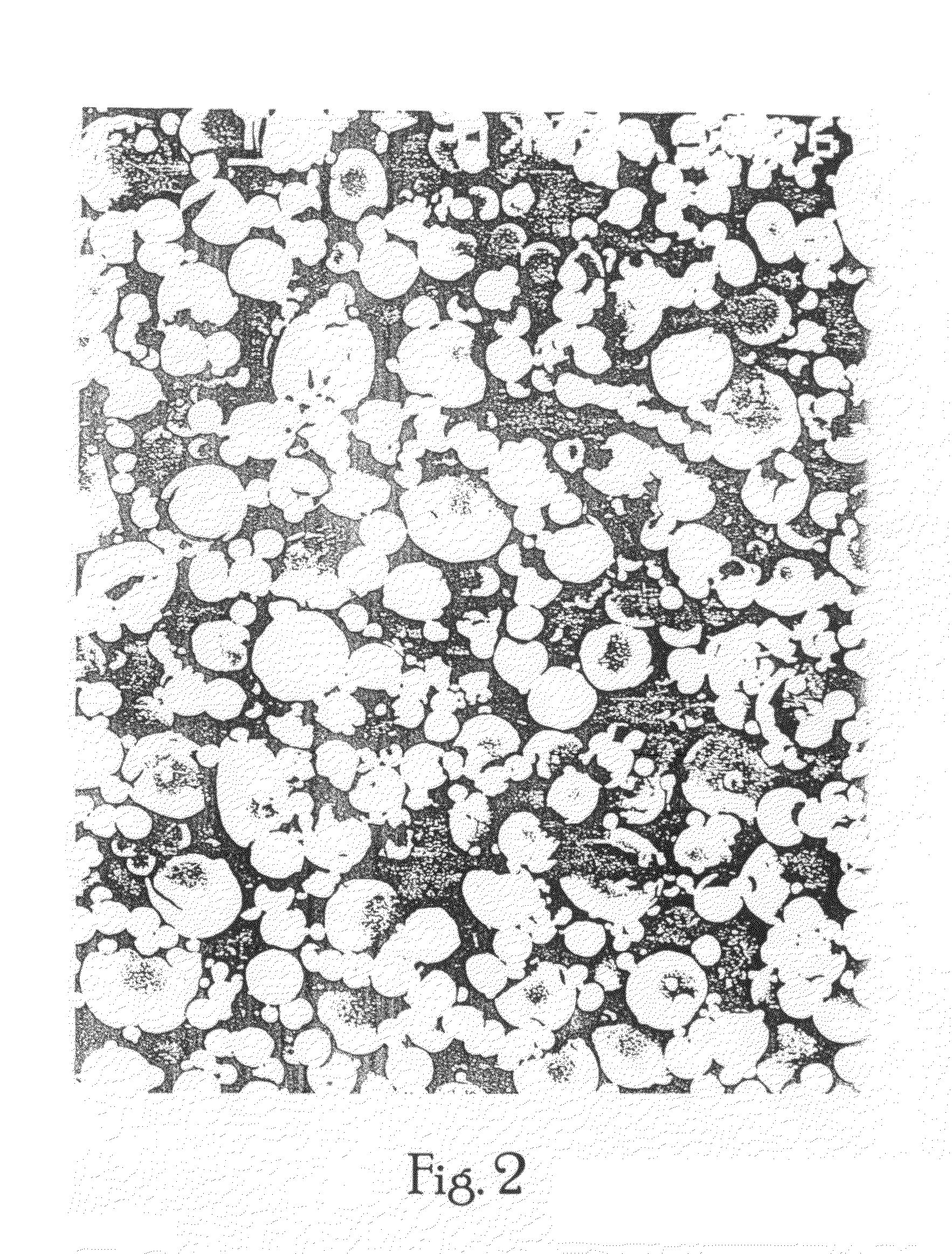Oral-intestinal vaccines against diseases caused by enteropathic organisms using antigens encapsulated within biodegradable-biocompatible microspheres
a biocompatible microsphere and enteropathogenic technology, applied in the field of oral-intestinal vaccines against enteropathogenic organisms using biodegradable biocompatible microspheres, can solve the problems of time-consuming and costly experiments to identify these epitopes, and the effective method of parenteral immunization to induce mucosal immunity is not effective, so as to prevent intestinal bleeding, enhance the immunogenicity of antigens, and promote intestinal bleeding. mild but significant
- Summary
- Abstract
- Description
- Claims
- Application Information
AI Technical Summary
Benefits of technology
Problems solved by technology
Method used
Image
Examples
example
[0109]Immunization. Rabbits were primed twice with 50 micrograms of either microencapsulated or non-encapsulated AF / R1 by endoscopic intraduodenal inoculation seven days apart by the following technique. All animals were fasted overnight and sedated with an intramuscular injection of xylazine (10 mg) and Ketamine HCl (50 mg). An Olympus BF type P10 endoscope was advanced under direct visualization through the esophagus, stomach, and pylorus, and a 2 mm ERCP catheter was inserted through the biopsy channel and threaded 2-3 cm into the small intestine. Inoculums of pili or pili embedded in microspheres were injected through the catheter into the duodenum and the endoscope was withdrawn. Animals were monitored daily for signs of clinical illness, weight gain, or colonization by RDEC-1.
example 2
[0110]Lymphocyte Proliferation. Seven days following the second priming, the rabbits were again sedated with a mixture of xylazine and katamine HCl, and blood was drawn for serum preparation by cardiac puncture. Animals were then euthanized with an overdose of pentothal and tissues including Peyer's patches from the small bowel, MLN, and spleen were removed. Single cell suspension were prepared and washed in Dulbeco's modified Eagle medium (Gibco Laboratories, Grand Island, N.Y.) which had been supplemented with penicillin (100 units / ml), streptomycin (100 micrograms / ml), L-glutamine (2 mM), and HEPES Buffer (10 mM) all obtained from Gibco Laboratories, as well as MEM non-essential amino acid solution (0.1 mM), MEM [50×] amino acids (2%), sodium bicarbonate (0.06%), and 5×10−5 micrograms 2-ME all obtained from Sigma Chemical Company (St. Louis, Mo.) [cDMEM]. Erythrocytes in the spleen cell suspension were lysed using standard procedures in an ammonium chloride lysing buffer. Cell su...
PUM
| Property | Measurement | Unit |
|---|---|---|
| size | aaaaa | aaaaa |
| size | aaaaa | aaaaa |
| size | aaaaa | aaaaa |
Abstract
Description
Claims
Application Information
 Login to View More
Login to View More - R&D
- Intellectual Property
- Life Sciences
- Materials
- Tech Scout
- Unparalleled Data Quality
- Higher Quality Content
- 60% Fewer Hallucinations
Browse by: Latest US Patents, China's latest patents, Technical Efficacy Thesaurus, Application Domain, Technology Topic, Popular Technical Reports.
© 2025 PatSnap. All rights reserved.Legal|Privacy policy|Modern Slavery Act Transparency Statement|Sitemap|About US| Contact US: help@patsnap.com



